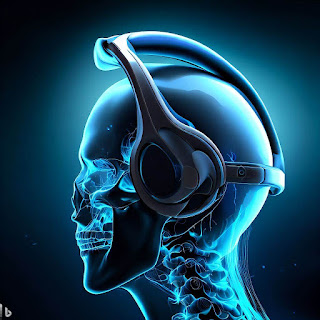Introduction
In the ever-evolving world of audio technology, bone conduction headphones have emerged as a groundbreaking innovation, changing the way we experience sound. As traditional headphones rely on speakers to produce sound that enters the ear canal, bone conduction headphones work by transmitting sound vibrations through the bones of the skull directly to the inner ear. In this blog post, we will delve into the fascinating world of bone conduction headphones, exploring their unique benefits, how they work, and why they are becoming increasingly popular among audiophiles, athletes, and individuals with specific hearing needs.
What are Bone Conduction Headphones?
Bone conduction technology has been around for several decades, originally developed to aid individuals with hearing impairments. However, recent advancements have made it possible to incorporate this technology into consumer-grade headphones. Bone conduction headphones typically consist of small transducers placed on the cheekbones or just in front of the ears. These transducers convert audio signals into vibrations, bypassing the outer and middle ear to reach the cochlea directly.
Image Source Wikipedia
The Benefits of Bone Conduction Headphones
- 1. Safer Listening Experience: Unlike traditional headphones that cover the ears or sit inside the ear canal, bone conduction headphones leave the ears open, allowing users to stay aware of their surroundings. This feature makes them ideal for outdoor activities, such as running, cycling, or walking, as users can enjoy music or take calls while remaining alert to potential hazards.
- 2. Comfort and Versatility: Bone conduction headphones are lightweight and often come in a wraparound design, providing a secure fit without putting pressure on the ears. Users can wear them comfortably for extended periods, making them perfect for fitness enthusiasts and daily commuters alike.
- 3. Suitable for Hearing Impairments: Individuals with conductive hearing loss or certain types of hearing impairments can benefit from bone conduction headphones. As the sound is transmitted through bone vibrations, it effectively bypasses the damaged outer or middle ear, allowing those with specific hearing issues to still enjoy audio content.
How Do Bone Conduction Headphones Work?
Bone conduction headphones employ a simple yet ingenious mechanism. The transducers present in the headphones convert electrical audio signals into vibrations. These vibrations are then transferred to the temporal bone (located just in front of the ear) and travel directly to the cochlea in the inner ear. Once the cochlea receives the vibrations, they are transformed back into sound signals, creating an auditory experience for the user.
Image Source howstuffworks.com
Understanding the Limitations
While bone conduction headphones offer a unique listening experience, they do have some limitations worth considering. One of the primary concerns is the sound quality, which may not match that of high-end traditional headphones. Additionally, since the vibrations bypass the ear canal, bone conduction headphones may not deliver the same level of bass response as conventional options.
Conclusion
Bone conduction headphones are revolutionizing the way we interact with audio technology. Offering a safer listening experience, superior comfort, and suitability for individuals with specific hearing needs, they are a compelling option for those seeking an alternative to traditional headphones. While they may not replace all forms of audio devices, bone conduction headphones undoubtedly represent a remarkable technological advancement.
As the audio industry continues to innovate, bone conduction technology is likely to see further enhancements, making these headphones even more versatile and appealing to a broader audience. Whether you're an outdoor enthusiast, a fitness lover, or someone with hearing impairments, bone conduction headphones present an exciting and promising audio solution for the future. So, why not embrace the wonders of bone conduction and elevate your audio experience to new heights?
| Tech info |


.jpg)
.jpg)
I had heard about bone conduction headphones before, but this article really helped me understand the technology behind them and their unique benefits. I'm an avid runner, and the idea of being able to listen to music or take calls while still staying aware of my surroundings is a game-changer. The fact that these headphones can also be a great option for people with hearing impairments is truly remarkable. I'm definitely considering giving bone conduction headphones a try now. Thanks for the informative post.
ReplyDeleteThanks, it is very useful
ReplyDelete